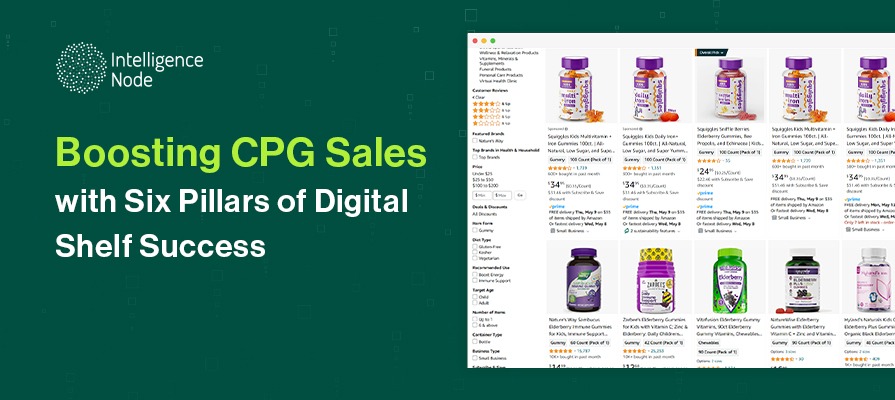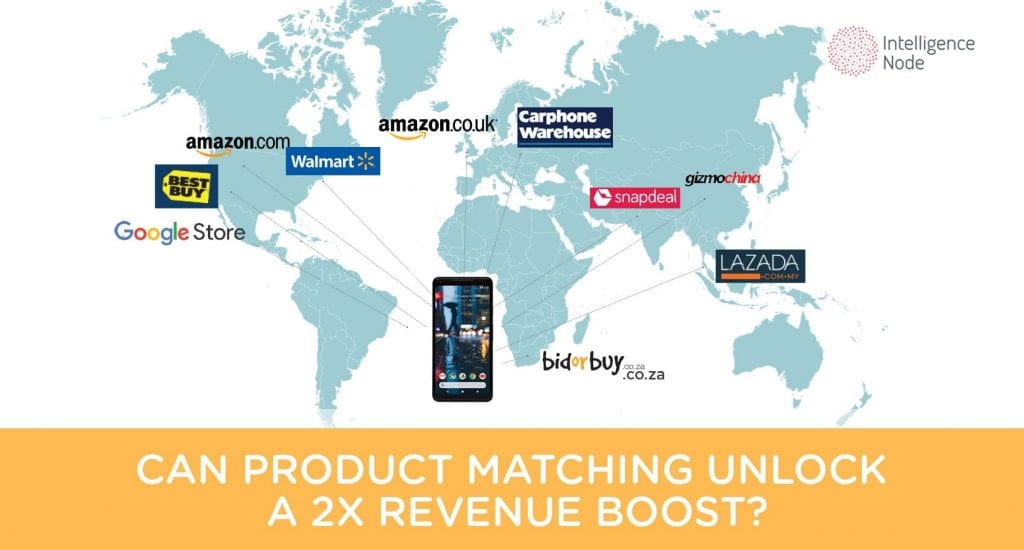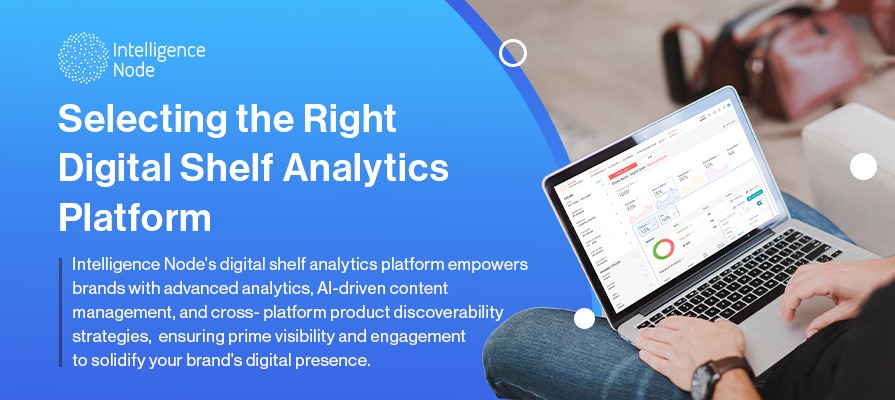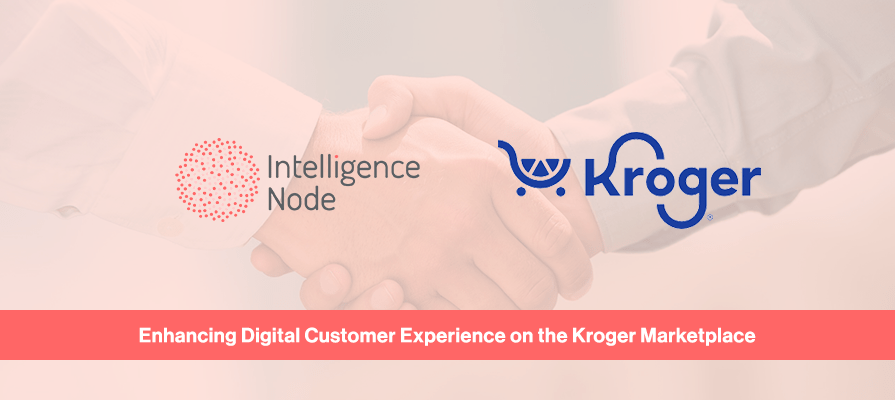In the rapidly evolving landscape of retail, the digital shelf has emerged as a pivotal battleground for consumer packaged goods (CPG) companies. In 2024, the shift towards digital retailing is undeniable. Projections indicate that by 2025, 70% of consumers will transition to online grocery shopping. Concurrently, the adoption of cutting-edge retail technology and artificial intelligence (AI) within the CPG industry is on a remarkable upswing. As a result, it’s anticipated that 40% of CPG firms will have integrated advanced technological solutions into their workflows in 2024 alone. This figure is expected to soar, potentially doubling by 2025, underscoring the sector’s rapid digital transformation. This blog illustrates the critical role of the digital shelf and advanced retail solutions in driving the future success of CPG eCommerce, offering insights into strategies, best practices, challenges, and the role of analytics in retail strategy in 2024.
Choosing the Right eCommerce Path for CPGs
Amidst this digital surge in retail, digital shelf visibility, or share of shelf, has emerged as a key metric of success in eCommerce. Selecting the right eCommerce channel is now pivotal for consumer packaged goods (CPG) brands aiming for long-term growth.
According to Intelligence Node’s 2024 consumer buying behaviour report, 70% of all shopper journeys begin primarily via Google Search. Amazon, ranked closely behind by Google, marks both as critical platforms for CPG brand sellers. Over 11% of shoppers begin their journeys on brand websites. DTC sales are expected to reach over $161.22 billion in 2024. Here, Walmart outpaces Amazon in grocery eCommerce. Instacart’s vast network of over 700 million products listed from more than 80,000 stores, positions it as a formidable player. Similarly, Kroger stands out as the largest grocery chain. With the introduction of Kroger Marketplace, this opens the doors to significant opportunities for food and beverage brands. Finally, Walgreens and CVS attract a large digital audience in the drugstore category. Each of these brands highlights the plethora of opportunities and the diverse digital shelf ecosystem CPG brands must navigate.
6 Pillars for CPG Success on the Digital Shelf
Daily-needs shopping habits are shifting towards online platforms. Mastering the digital shelf is crucial for brands aiming to enhance visibility and drive conversions in a competitive marketplace. At major retail stores and marketplaces, affordable private-label brands are steep competition to branded CPG products. In Europe, for example, private-label brands account for 40% of all grocery sales.
Next Read : Own the Digital Shelf by Addressing These 6 Challenges
Further, with lower barriers to entry, emerging brands and digital-first startups pose a significant challenge to massive retailers. With flexible operations, a digital-first approach, engaging product and brand content, new competitors can quickly gain traction online. Consequently, optimizing eCommerce channels for top-page visibility has become imperative for retail success. Shoppers now prioritize convenience, seeking quick discovery (within the top 5 search results), easy payments, and efficient delivery options. Adopting robust digital strategy can significantly enhance a brand’s virtual presence. It they meet consumers’ evolving shopping behaviors and preferences while staying competitive in the digital marketplace.
1. Optimizing Product Content
With an endless selection of alternative or competing products available to shoppers, improving a product’s search and category ranking on eCommerce sites is pivotal. In 2024, the majority of online shoppers limit their searches to the first page of results. Here, 19% select from the top 5 options, and 52% distinguish between organic and paid search results, favoring organic.
Thus, product listings must be compelling and informative, and enriched with SEO-optimized content to improve SERP rankings and visibility. Incorporating trending keywords naturally into titles and descriptions of products can make it easier for potential customers to find online. On the digital shelf, this necessitates being ranked above competitor listings. To improve SERP performance and rankings, it’s essential to steer clear of inaccurate labeling and categorizations. Solutions must be adopted to avoid stock-outs, inventory issues, and inflexible payment and delivery options. Optimizing for platform-specific algorithms, and engaging in promotional activities such as paid advertising or platform deals can also increase visibility.
2. Maintaining Accurate Product Labels & Comprehensive Descriptions
The backbone of a strong digital shelf strategy is the quality of product content. Our consumer survey report revealed that 57% of shoppers abandon shopping sites due to inaccurate or incomplete product information. Detailed, comprehensive, and accurate product descriptions, along with high-resolution images and videos, provide consumers with a clear understanding of what they are purchasing in the absence of physical touch. These include high-quality images that showcase products from multiple angles. Further, detailed descriptions that highlight key features, AR views, Zoom features, product demos all contribute to an immersive shopper experience. This transparency is key to boosting conversions, reducing returns, and increasing customer satisfaction. Ensuring that product labels and descriptions are thorough and precise helps in managing consumer expectations effectively, leading to better reviews and enhanced brand loyalty.
This PDP by The Clorox Company showcases a product demo, several images, as well as supplementary product options to enhance customer experience
3. Adopting a Mobile-First Approach
With a significant portion of online shopping occurring on mobile devices, optimizing for mobile is non-negotiable. This means ensuring that websites and product pages are responsive, load quickly, and provide an intuitive, quick, and convenient shopping experience on smaller screens. As “on-the-go” shopping picks up pace, a mobile-first or omnichannel approach can significantly enhance customer engagement and conversion rates. Further, ensuring the digital shopping experience integrates smoothly with brick-and-mortar shopping journeys is critical. 3 out of 4 shoppers compare products online while shopping in-store to compare prices, conduct product research, and seek out customer reviews.
Verve Coffee Roasters boasts a mobile-optimized eCommerce platform. PDPs display their selection of fresh coffee, enhanced with serving suggestions, imagery, and emboldened product reviews from satisfied customers
4. Utilizing Customer Feedback
Incorporating customer reviews and ratings into product pages boosts the credibility of your products. It can also provide valuable insights into consumer preferences and potential areas for improvement. In 2024, positive reviews were ranked as the second most influential factor in online purchasing decisions. They are a valuable tool for shoppers to compare products against alternatives, and gauge the quality of available products before making a purchase. In fact, 24% of shoppers claim to search for online reviews of products while shopping in-store as a critical step in their product research. In today’s retail climate with infinite options to choose from across multiple price points, positive reviews and rankings help brands stand out against the crowd and showcase key products in a competitive environment. Actively responding to customer feedback demonstrates a brand’s commitment to customer satisfaction and can lead to improved product offerings and stronger customer relationships.
5. Adopting Dynamic Pricing Strategies
For CPG brands, pricing can be a major differentiator on the digital shelf. With a multitude of alternative products, including private label brands and up-and-coming digital brands to compete against, a robust pricing strategy is a key tool in a CPG retailer’s arsenal to ensure key products remain competitive, relevant, and visible. However, repeated price slashes and excessive discounting can lead to price wars. With razor-thin margins, brands not only negatively impact profitability, but brand perception in the long run.
Implementing data-powered competitive pricing strategies helps brands manage pricing across multiple channels and products to consistently stay ahead of the competition. Here, brands can utilize sales data, track competitor pricing, and monitor market dynamics to respond promptly to demand, promotions, and inventory levels, enabling real-time adjustments to boost sales and profitability.
6. Leveraging Advanced Analytics
Data is the cornerstone of any successful digital shelf strategy. By analyzing consumer behavior, sales trends, and competitive insights, brands can make informed decisions to optimize their digital presence. This includes adjusting product assortments, refining content, and tailoring marketing strategies to target demographics most effectively. The adoption of next-generation analytics tools is critical to brands seeking to build robust, future-proof retail strategy in the long run.
By adhering to these best practices, brands can effectively manage their digital shelf presence, leading to increased visibility, consumer trust, and, ultimately, sales.
The Role of Technology in Digital Shelf Success
Data-driven retail technology has revolutionized the Consumer Packaged Goods industry, offering unparalleled opportunities for growth and efficiency. Comprehensive analysis of shopper activity, market trends, and sales data companies can unlock actionable insights, directly impacting profitability. One example is the ‘market basket analysis’. Data-driven consumer segmentation enables targeted retail strategies that have been shown to substantially boost brand loyalty and marketing ROI. Further, advanced data analytics contribute greatly to inventory management, avoiding stockouts through demand forecasting. This works by taking into account multiple factors and historical data to stock the optimal product mix across retail touchpoints. This creates an assortment of trending, relevant items to peak consumer interest. Moreover, sentiment analysis offers a direct line to consumer perceptions. It allows brands to swiftly address concerns, reformulate products, and maintain a positive brand reputation.
These real-life applications underscore the pivotal role of data analytics in driving innovation, customer satisfaction, and operational efficiency in the CPG industry. However, according to an Intelligence Node report, only 13.5% of retailers are making significant use of AI-driven technology. The majority of retailers reported frequent & highly accurate data updates are missing from their current tech stack, despite 35% stating that ‘consumer trends & market analytics tools’ will help tackle inflation and supply chain woes.
Addressing Digital Shelf Challenges Using Data Analytics
Since retailers are constantly evolving their eCommerce sites to improve the customer experience, CPGs have their hands full keeping content up to date and relevant. With frequent changes in configurations, crucial elements of product detail pages can easily disappear, malfunction, or become outdated. Further, navigating the complexities of the digital shelf presents a myriad of challenges for brands. Here, stiff competition and ever-evolving platform algorithms at the forefront. For example, in 2024 alone, Amazon changed its platform requirements 217 times. This is less than Walmart with a whopping 241 changes, as well as Target, Kroger, and Instacart. Each of these brands changed their platform requirements between 100 to 150 times in the same period.
This relentless pace of change requires brands to be agile and continually adapt their strategies to stay afloat across channels, differentiate themselves, and capture the attention of potential customers. Similarly, SERP algorithms often prioritize factors like customer engagement, search relevance, and sales performance to dictate rankings, but criteria can shift unexpectedly, necessitating constant vigilance and quick adjustments to maintain product visibility and sales momentum.
Consequently, the manual oversight and adjustment of digital shelf strategies can be both labor-intensive and time-consuming. This is where the adoption of advanced automation systems and next-generation retail technology becomes indispensable. Intelligence Node’s digital shelf analytics solutions offer a powerful tool for brands looking to navigate these complexities with ease. By automating the analysis of competitive landscapes, optimizing product visibility, and staying ahead of algorithm changes, these solutions enable brands to maintain a competitive edge on the digital shelf without the constant manual effort. Leveraging such technologies allows brands to focus more on innovation and less on the operational intricacies of online retail- book a demo to learn more.




